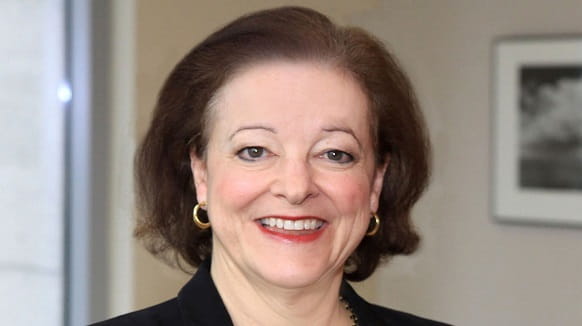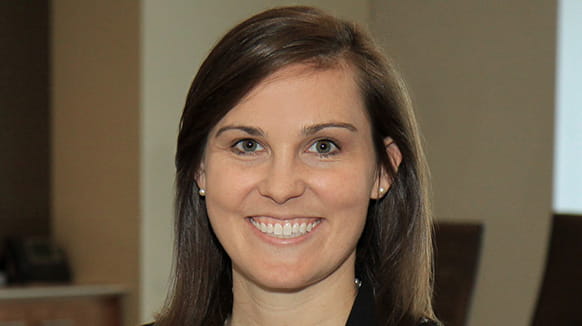UPDATED: May 5, 2020.
As the COVID-19 pandemic surges and the social distancing imperative continues, regulators have responded with various policies and guidance that impact and expand the opportunities for providing telehealth services. The Centers for Medicare and Medicaid Services (“CMS”) generally defines telehealth, telemedicine, and related terms as the exchange of medical information from one site to another through electronic communication to improve a patient’s health. With COVID-19, CMS recognizes that there is an urgency to expand the use of technology and telehealth services for routine care and to keep vulnerable patients and patients with mild symptoms in their homes while maintaining access to the care they need.
1135 Waiver for Existing Limitations on Medicare Coverage for Telehealth Services
Recent legislation, including the Coronavirus Preparedness and Response Supplemental Appropriations Act (“CPRSA Act”), signed into law on March 6, 2020, and the Coronavirus Aid, Relief, and Economic Security Act (“CARES Act”), signed into law on March 27, 2020, includes provisions that expand access to telehealth services. Specifically, the legislation gives the Secretary (“Secretary”) of the U.S. Department of Health & Human Services (“HHS”) authority to waive or modify certain Medicare telehealth requirements under Section 1135 of the Social Security Act during the public health emergency (“PHE”) declared by the Secretary on January 31, 2020.
Under the 1135 waiver authority granted by the CPRSA Act, certain limitations on Medicare coverage for telehealth visits have been waived on a temporary basis starting March 6, 2020 and continuing during the PHE. In addition, the CARES Act broadened the ability of the Secretary to waive additional requirements.
Originating Site and Rural Area Restrictions:
Under the waiver, Medicare can pay for office, hospital, and other visits furnished via telehealth across the country and including in a patient’s residence. Before the waiver, Medicare could only pay for telehealth on a limited basis when the person receiving the service was in a designated rural area and in a physician’s office or other authorized healthcare facility. The waiver temporarily eliminates the requirement that the originating site must be a physician’s office or other authorized healthcare facility and allows Medicare to pay for telehealth services when beneficiaries are in their homes or any other setting of care.
Eligible Provider:
Pursuant to authority granted under the CARES Act, the Secretary authorized additional waivers to expand the types of healthcare professionals that can furnish distant site telehealth services. Distant site practitioners who can furnish and get payment for covered telehealth services (subject to state law) include all those that are eligible to bill Medicare for their professional services. This allows healthcare professionals such as physicians, nurse practitioners, physician assistants, nurse midwives, certified nurse anesthetists, clinical psychologists, clinical social workers, registered dietitians, and nutrition professionals to furnish and bill for Medicare telehealth services, as well as those that were previously ineligible, including physical therapists, occupational therapists, speech language pathologists, and others.
Qualifying Technology:
Generally, Medicare telehealth services must be furnished using audio and video equipment that permits two-way real-time interactive communication between the distant site physician or practitioner and the patient. This includes mobile computing devices that have audio and video capabilities that allow for two-way, real-time interactive communication. The 1135 waiver also allows the Secretary to authorize use of telephones that have audio and video capabilities. Pursuant to authority granted under the CARES Act, CMS waived the requirement for the use of interactive telecommunications systems to furnish telehealth services to the extent they require use of video technology, for certain services. This waiver allows the use of audio-only equipment to furnish services described by the codes for audio-only telephone evaluation and management services, and behavioral health counseling and educational services.
Prior Existing Relationship:
The CARES Act removed the requirement for an established relationship between the provider and the patient (i.e., that the provider had seen the patient in person within the past 3 years). Thus, distant site providers can provide Medicare telehealth services without any pre-existing patient relationship. Prior to the CARES Act, HHS had announced a policy of enforcement discretion for Medicare telehealth services furnished pursuant to the 1135 waiver and would not conduct audits as to the existence of a prior relationship between the provider and the patient.
Eligible Service:
Medicare patients may use telecommunication technology for office, hospital visits and other services that generally occur in-person. The services must be furnished consistent with applicable coverage and payment rules, but the telehealth services are not limited to services related to patients with COVID-19. CMS has expanded the list of Medicare telehealth services with dates of service beginning March 1, 2020 through the end of the PHE. The list of eligible codes is available here.
While claims for Medicare telehealth services submitted by physicians or practitioners must typically include the Place of Service (POS) code 02-Telehealth to indicate the billed service was furnished as a professional telehealth service from a distant site (and thus will be paid at the Physician Fee Schedule facility rate), during the PHE, CMS is instructing physicians and practitioners who bill for Medicare telehealth services to report the POS code that would have been reported had the service been furnished in person. This will allow Medicare systems to pay for services furnished via Medicare telehealth which, if not for the PHE, would have been furnished in person, at the same rate they would have been paid if the services were furnished in person. This interim change was made to maintain overall relativity under the Physician Fee Schedule for similar services and eliminate potential financial deterrents to the clinically appropriate use of telehealth, given the importance of telehealth services as a means of minimizing exposure risks for patients, practitioners, and communities. Further, because CMS currently uses the POS code on the claim to identify Medicare telehealth services, it is instructing providers to use the CPT telehealth modifier (modifier 65) for claim lines that describe services furnished via telehealth. See CMS Interim Final Rule here.
The following chart shows three types of virtual services physicians and other professionals can provide to Medicare beneficiaries and some examples of the related HCPCS/CPT codes. During the public health emergency, these services can be rendered to new or established patients. For more information, see CMS guidance here.
-
Type of Service
What is the Service?
HCPCS/CPT Code
Patient Relationship with Provider (During PHE)
Medicare Telehealth Visit
A visit with a provider that uses telecommunication systems between a provider and a patient.
Common telehealth services include:
- 99201-99215 (Office or other outpatient visits)
- G0425-G0427 (Telehealth consultations, emergency department or initial inpatient)
- G0406-G0408 (Follow-up inpatient telehealth consultations furnished to beneficiaries in hospitals or SNFs).
For a complete list: https://www.cms.gov/Medicare/Medicare-general-information/telehealth/telehealth-codes
For new or established patients.
Virtual Check-In
A brief (5-10 minutes) check-in with a practitioner via telephone or other telecommunications device to decide whether an office visit or other service is needed. A remote evaluation of recorded video and/or images submitted by an established patient.
HCPCS code G2012
HCPCS code G2010
For new or established patients
E-Visit
A communication between a patient and their provider through an online patient portal
- 99421
- 99422
- 99423
- G2061
- G2062
- G2063
For new or established patients
CMS has made numerous other changes to the Medicare payment rules during the PHE to give physicians and other practitioners, home health and hospice providers, inpatient rehabilitation facilities, rural health clinics (RHCs), federally qualified health centers (FQHCs), and others broader flexibilities to furnish services using remote communications technology, as discussed in the Interim Final Rule dated April 6, 2020 available here and the blanket waivers here. For example, CMS has revised the definition of direct supervision to allow, for the duration of the PHE, direct supervision to be provided using real-time interactive audio and video technology. CMS also waived the requirement in 42 CFR 483.30 for physicians and non-physician practitioners to perform in-person visits for nursing home residents and allowed such visits to be conducted, as appropriate, via telehealth options.
HHS has also waived the requirement that physicians or other health care professionals hold licenses in the state in which they provide services if they have an equivalent license from another state. While these waivers only apply to Medicare, and do not address Medicaid or other state licensing law requirements, states may similarly broaden Medicaid reimbursement for telehealth services and remove certain licensing requirements for providers during this public health emergency. For more information, see the Fact Sheet and FAQ.
OIG Permits Waiver of Copays for Telehealth Services
On March 17, 2020, the HHS Office of Inspector General (“OIG”) issued a policy statement permitting healthcare providers to reduce or waive beneficiary cost-sharing for telehealth visits paid for by federal healthcare programs during the COVID-19 public health emergency. Ordinarily, if healthcare providers routinely reduce or waive costs owed by federal healthcare program beneficiaries, including cost-sharing amounts such as coinsurance and deductibles, they would potentially implicate the federal anti-kickback statute, the civil monetary penalty and exclusion laws related to kickbacks, and the civil monetary penalty law prohibition on inducements to beneficiaries. However, the OIG is committed to ensuring that healthcare providers have the regulatory flexibility necessary to adequately respond to COVID-19, and will therefore not enforce these statutes if providers reduce or waive cost-sharing for telehealth visits during the public health emergency. For more information, see Policy Statement and Fact Sheet.
OCR Issues Notice of Enforcement Discretion for HIPAA Non-Compliance for Telehealth Services
Effective March 17, 2020, the HHS Office for Civil Rights (“OCR”) issued a Notification of Enforcement Discretion (“Notice”) stating that it will not impose penalties for noncompliance with the Health Insurance Portability and Accountability Act of 1996 (“HIPAA”) against health care providers in connection with the good faith provision of telehealth during the COVID-19 nationwide public health emergency. This Notice applies to telehealth provided for any reason, regardless of whether the telehealth service is related to the diagnosis and treatment COVID-19.
The OCR specified in its Notice that a covered health care provider may provide telehealth services to patients through any non-public facing remote communication product, including popular applications that allow for chats (e.g., Facebook Messenger video chat or Skype). A “non-public facing” remote communication product is one that, as a default, allows only the intended parties to participate in the communication. However, health care providers should not use certain video communication that are public facing (e.g., Facebook Live, Twitch, and TikTok). The OCR further specified that telehealth services may be provided through audio, text messaging, or video communications technology, including videoconferencing software.
OCR will consider all facts and circumstances when determining whether a health care provider’s use of telehealth services is provided in good faith and thereby covered by the Notice. Some examples of what OCR may consider a bad faith provision of telehealth services include:
- Conduct or furtherance of a criminal act, such as fraud, identity theft, and intentional invasion of privacy;
- Further uses or disclosures of patient data transmitted during a telehealth communication that are prohibited by the HIPAA Privacy Rule (e.g., sale of the data, or use of the data for marketing without authorization);
- Violations of state licensing laws or professional ethical standards that result in disciplinary actions related to the treatment offered or provided via telehealth (i.e., based on documented findings of a health care licensing or professional ethics board); or
- Use of public-facing remote communication products, such as TikTok, Facebook Live, Twitch, or a chat room like Slack, which OCR has identified in the Notification as unacceptable forms of remote communication for telehealth because they are designed to be open to the public or allow wide or indiscriminate access to the communication.
The OCR also noted that it will not impose penalties against healthcare providers for the lack of a business associate agreement (“BAA”) with video communication vendors or any other noncompliance with the HIPAA regulations that relates to the good faith provision of telehealth services during the nationwide public health emergency. For healthcare providers seeking additional privacy protection, the Notice includes a list of vendors that represent that they provide HIPAA-compliant video communication products and will enter into a HIPAA-compliant BAA, including, among others, Skype for Business, Updox, VSee, Zoom for Healthcare, and Doxy.me. However, OCR does not endorse or recommend these vendors.
The Notice addresses the enforcement only of the HIPAA rules. It does not address violations of 42 CFR Part 2, the HHS regulation that protects the confidentiality of substance use disorder patient records, however, the Substance Abuse and Mental Health Services Administration has issued some guidance on COVID-19 and 42 CFR Part 2. For more information, see Notice and FAQ.
DEA Permits Prescribing Controlled Substances Via Telemedicine Without Prior In-Person Exam
According to guidance issued by the U.S. Drug Enforcement Administration (“DEA”), effective March 16, 2020 and continuing for as long as the Secretary’s designation of a public health emergency remains in effect, DEA-registered practitioners in all areas of the United States may issue prescriptions for all schedule II-V controlled substances to patients for whom they have not conducted an in-person medical evaluation, provided all of the following conditions are met:
- The prescription is issued for a legitimate medical purpose by a practitioner acting in the usual course of his/her professional practice;
- The telemedicine communication is conducted using an audio-visual, real-time, two-way interactive communication system; and
- The practitioner is acting in accordance with applicable Federal and State laws.
Provided the practitioner satisfies the above requirements, the practitioner may issue the prescription using any of the methods of prescribing currently available and in the manner set forth in the DEA regulations. Thus, the practitioner may issue a prescription either electronically (for schedules II-V) or by calling in an emergency schedule II prescription to the pharmacy, or by calling in a schedule III-V prescription to the pharmacy.
The term “practitioner” includes a physician, dentist, veterinarian, or other person licensed, registered, or otherwise permitted, by the United States or the jurisdiction in which s/he practices to prescribe controlled substances in the course of his/her professional practice.
Typically, a prescription for a controlled substance issued using the Internet (including telemedicine) must generally be predicated on an in-person medical evaluation. Importantly, despite the DEA’s modification for COVID-19, the practitioner must still comply with any applicable state laws, which may prohibit or limit prescribing controlled substances via telemedicine. For more information, see DEA COVID-19 Information Page.
With this additional regulatory flexibility for telehealth services, healthcare providers will likely experience greater ability to provide patient care remotely, although there is still some disconnect between state and federal laws and requirements. In addition, while this regulatory flexibility may be temporary during the public health emergency, it will potentially serve as a case study and data collection opportunity to further demonstrate the benefits of telehealth services and affect future legislation. For more information regarding telehealth or COVID-19, please see our COVID-19 Resources page or contact a member of our Healthcare and Life Sciences practice group.



